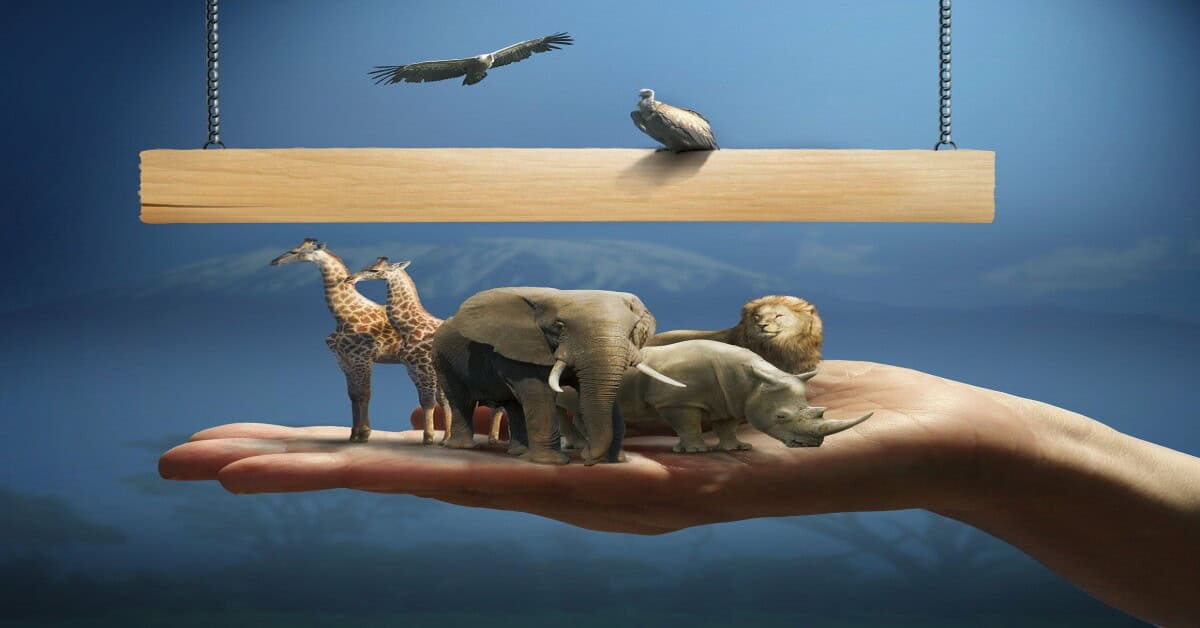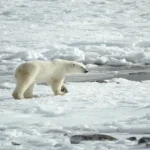Plant and animal diversity, also known as biodiversity, is the variety of life forms on Earth. Understanding plant and animal diversity is crucial for maintaining healthy environments and supporting life. In this overview of plant and animal diversity, we’ll explore diversity of plants and animals and their roles in ecosystems.
Biodiversity ensures ecosystems function properly. It helps with processes like pollination, nutrient cycling, and climate regulation. Recognizing the importance of plant and animal diversity can guide conservation efforts and sustainable practices.
This blog post, we’ll cover the major groups of plants and animals, their habitats, and the threats they face. We’ll also discuss the significance of preserving biodiversity for future generations.
Biodiversity
Biodiversity refers to the variety of life on Earth, encompassing all plants, animals, and microorganisms. It exists at three levels:
- Genetic
- Species
- Ecosystem diversity
Understanding these levels helps us appreciate the complexity of life and its interconnectedness.
Genetic Diversity
Genetic diversity is the variation within species, including differences in DNA among individuals.
This diversity allows species to adapt to environmental changes, resist diseases, and survive threats. It is crucial for the evolution and sustainability of species over time.
Species Diversity
Species diversity is the variety of species within a habitat or region. High species diversity enhances ecosystem resilience, productivity, and stability.
It ensures that ecosystems can recover from disturbances and continue to provide essential services like pollination and decomposition.
Ecosystem Diversity
Ecosystem diversity is the range of different ecosystems in a region, such as forests, deserts, wetlands, and oceans. Each ecosystem supports various life forms and their interactions, contributing to the overall health of the planet.
This diversity ensures that natural processes, such as nutrient cycling and climate regulation, function smoothly.
Biodiversity is vital for ecological balance and human well-being. It provides essential resources like food, medicine, and raw materials.
Additionally, healthy ecosystems offer services like clean air and water, soil fertility, and climate stability, ensuring a sustainable and healthy planet.
What Does Biodiversity Means?
Biodiversity refers to the variety and variability of life on Earth, encompassing all species of plants, animals, and microorganisms, as well as the genetic differences within these species and the ecosystems they form.
It highlights the complexity of life and the intricate interdependencies among different organisms and their environments. Biodiversity is not just about the number of species, but also about the genetic and ecological variations that sustain life.
The concept of biodiversity has deep historical roots. The study of life’s diversity dates back to ancient times, but it gained scientific traction in the 19th century with the advent of evolutionary theory.
The term biodiversity was coined in the 1980s, during a growing awareness of environmental degradation and species extinction. This period marked a pivotal shift towards recognizing the need for conservation and sustainable practices.
Preserving diversity of plants and animals is crucial for the health of our planet. Plant and animal diversity ensures ecosystem stability and resilience, supporting vital processes like pollination, soil fertility, and water purification.
Biodiversity also provides resources for medicine, agriculture, and industry. Protecting it is essential for human well-being and the sustainability of life on Earth.

Coining the Concept of Biodiversity
The term “Biodiversity” was first coined by Walter G. Rosen in 1985 during the planning of the National Forum on Biodiversity.
This event, held in 1986, aimed to address the growing concerns about the loss of biological diversity. The term quickly gained traction and became a cornerstone in discussions about conservation and environmental science.
Several key figures played significant roles in developing the concept of biodiversity. Early ecologists and naturalists laid the groundwork by studying species variation and ecosystems.
However, it was in the latter half of the 20th century that the concept truly evolved. Scientists began to recognize the interconnectedness of all life forms and the importance of preserving this variety.
E.O. Wilson, often called the “father of biodiversity,” was instrumental in popularizing the term. His work highlighted the importance of plant and animal diversity and its impact on ecosystems.
Wilson’s books and research brought attention to the rapid loss of species and the need for urgent conservation efforts. His contributions have been pivotal in shaping modern conservation strategies and raising global awareness.
Also Read: Preserving Our Planet: Ecology and Environment Conservation
How Many Species Are Present on Earth?
Current estimates suggest that there are around 8.7 million species on Earth, including plants and animals. Of these, approximately 6.5 million species are found on land and 2.2 million in the oceans.
However, these numbers are not definitive, as many species remain undiscovered. Scientists continually work to identify and catalog new species, enhancing our understanding of the planet’s biodiversity.
Known species are those that have been scientifically described and documented. Yet, there are many species that have gone extinct before being discovered.
For plants, it is estimated that there are about 390,000 known species, while for animals, estimates range around 1.2 million known species.
The vast majority of undiscovered species are believed to be small organisms like insects and microorganisms.
Ecosystems with high species richness include rainforests, coral reefs, and deserts. Rainforests, for instance, host a significant proportion of the world’s plant and animal diversity.
The Amazon rainforest alone is home to about 10% of all known species. Coral reefs, often called the “rainforests of the sea,” are incredibly diverse marine ecosystems. Even deserts, despite harsh conditions, support unique and specialized species.
Documenting and understanding species diversity is crucial for several reasons. It helps scientists monitor ecosystem health and detect changes in environmental conditions.
Knowledge of plant and animal diversity is essential for conservation efforts, allowing us to protect endangered species and habitats.
Besides, many species have potential benefits for medicine, agriculture, and other human needs. Understanding this diversity ensures we can sustainably manage and benefit from the natural world.
Importance of Plant and Animal Diversity
Plant and animal diversity plays a crucial role in maintaining ecological balance. Plants produce oxygen and provide food and habitat for animals. Animals, in turn, help with pollination, seed dispersal, and nutrient cycling.
These interactions ensure that ecosystems function properly and remain resilient to changes.
Biodiversity offers numerous benefits to ecosystems and human society. Diverse ecosystems are more productive and better able to withstand environmental stresses.
They provide a variety of goods and services essential for human survival. For example, a single ecosystem can offer food, medicine, and materials for shelter. Understanding and preserving plant and animal diversity is essential for our well-being.
Examples of ecosystem services provided by diverse species include pollination, water purification, and soil fertility.
Pollinators like bees and butterflies are vital for the reproduction of many plants, including crops. Wetlands, with their rich plant and animal life, filter pollutants from water, improving its quality. Healthy soils, maintained by diverse organisms, support agriculture and forest growth.
The economic and cultural significance of biodiversity is immense. Many industries, such as agriculture, pharmaceuticals, and tourism, rely on diverse biological resources.
Culturally, plants and animals are integral to many traditions and practices around the world.
Preserving biodiversity ensures that these resources remain available for future generations, supporting sustainable development and cultural heritage.
Threats to Biodiversity
Plant and animal diversity faces significant threats from various human activities. Major threats include habitat loss, climate change, pollution, and global warming.
Deforestation and urbanization destroy natural habitats, making it difficult for many species to survive. Climate change alters habitats and weather patterns, affecting the life cycles and distribution of plants and animals.
Pollution from chemicals, plastics, and other waste products contaminates ecosystems, harming wildlife and disrupting natural processes.
Examples of endangered species highlight the severity of these threats. The Sumatran tiger, the Javan rhino, and the orangutan are critically endangered due to habitat loss and poaching.
Birds like the California condor and the Kakapo are also facing extinction. Threatened ecosystems include the Amazon rainforest, which is being rapidly deforested, and coral reefs, which are dying due to ocean warming and acidification.
These examples show how diverse species and habitats are under severe pressure.
Human activities have a profound impact on biodiversity. Agriculture, mining, and industrial activities often lead to habitat destruction and pollution. Over fishing and hunting reduce species populations to critical levels.
Also, introducing invasive species can disrupt local ecosystems and outcompete native species.
Addressing these human-induced threats is essential to protect plant and animal diversity and ensure the health and stability of our planet’s ecosystems.
Efforts to Preserve Biodiversity
Efforts to preserve biodiversity include a variety of conservation strategies and initiatives. Protected areas like national parks and wildlife reserves help safeguard habitats.
Wildlife corridors connect fragmented habitats, allowing species to move and maintain genetic diversity.
For example, Yellowstone to Yukon Conservation Initiative in North America and the establishment of tiger reserves in India are significant steps towards conservation.
India’s Bandipur Tiger Reserve is a notable example, protecting a crucial habitat for tigers and other wildlife.
Organizations and governments play a crucial role in biodiversity conservation. International organizations like the World Wildlife Fund (WWF) and the International Union for Conservation of Nature (IUCN) work globally to protect species and habitats.
Governments enforce laws and regulations, such as the Endangered Species Act in the United States and the Wildlife Protection Act in India. These efforts include funding conservation projects and supporting research on biodiversity.
There have been several successful conservation efforts worldwide. The recovery of the Bald Eagle in the United States is a remarkable example.
Once on the brink of extinction, conservation actions like banning harmful pesticides and protecting nesting sites have led to a significant rebound in their population.
Similarly, the Mountain Gorilla population in East Africa has increased due to dedicated conservation efforts, including anti-poaching measures and habitat protection.
Individuals can also contribute to biodiversity conservation. Simple actions like planting native species in gardens, reducing the use of plastic, and supporting sustainable products make a difference.
Volunteering with local conservation groups and spreading awareness about the importance of plant and animal diversity can amplify these efforts.
Each person’s contribution adds to the collective impact needed to preserve our planet’s biodiversity.
Conclusion
Overview of plant and animal diversity highlights the crucial role biodiversity plays in maintaining healthy ecosystems. The variety of life forms ensures ecological balance, resilience, and numerous benefits to humans.
It’s essential for us to get involved in conservation efforts, whether through local initiatives or global campaigns. By protecting plant and animal diversity, we safeguard our planet’s future.
For those interested in learning more, consider reading “The Diversity of Life” by E.O. Wilson and “Biodiversity” edited by Edward O. Wilson and Frances M. Peter.
Journals like “Conservation Biology” and “Global Ecology and Biogeography” offer in-depth insights into ongoing research and conservation strategies.








